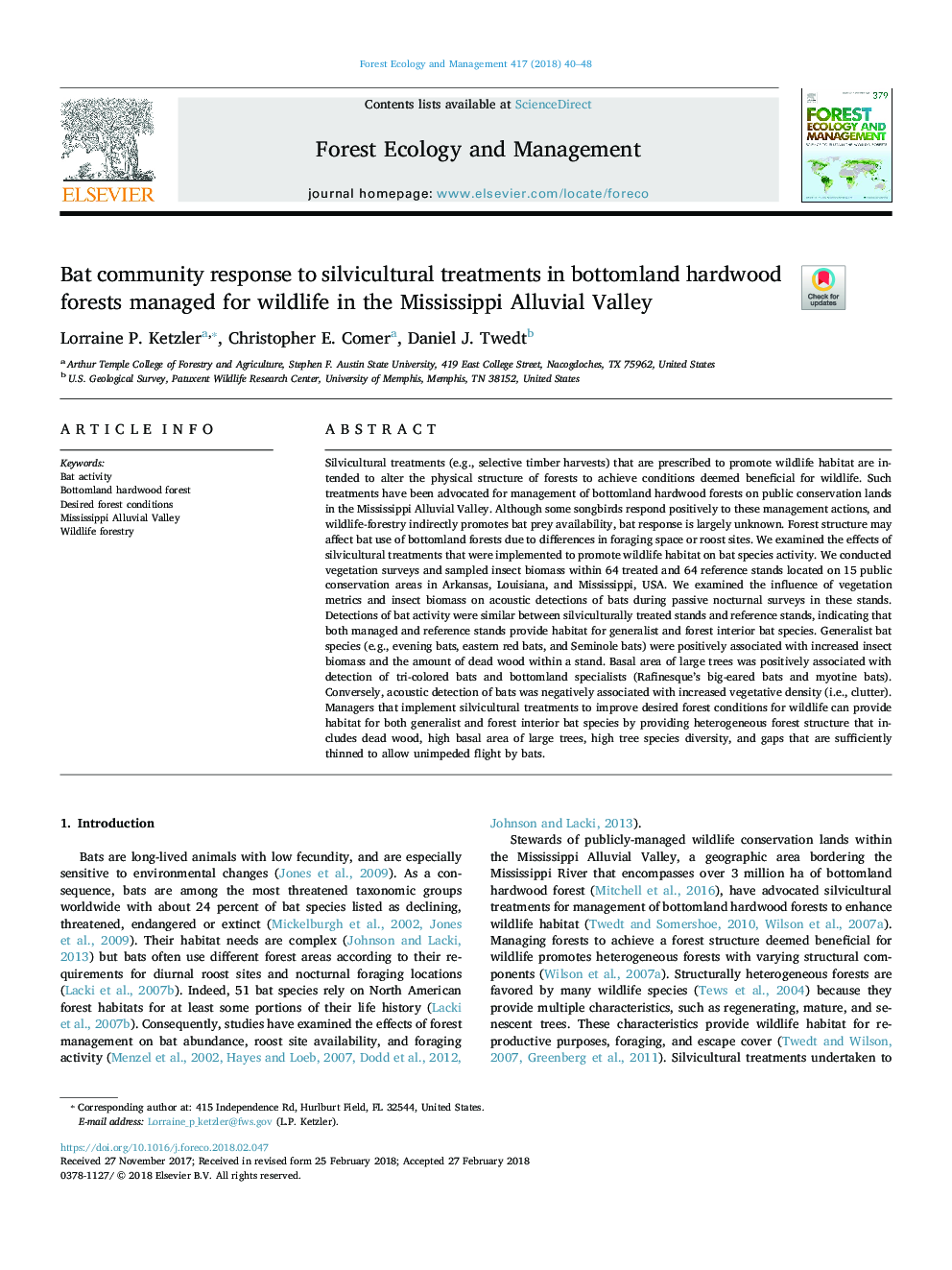| کد مقاله | کد نشریه | سال انتشار | مقاله انگلیسی | نسخه تمام متن |
|---|---|---|---|---|
| 6541741 | 1421342 | 2018 | 9 صفحه PDF | دانلود رایگان |
عنوان انگلیسی مقاله ISI
Bat community response to silvicultural treatments in bottomland hardwood forests managed for wildlife in the Mississippi Alluvial Valley
ترجمه فارسی عنوان
پاسخ بت جامعه به درمان های زراعی در جنگل های جنگل دشتی که برای حیات وحش در ولسوالی می سی پی مدیریت می شود
دانلود مقاله + سفارش ترجمه
دانلود مقاله ISI انگلیسی
رایگان برای ایرانیان
کلمات کلیدی
فعالیت بت، جنگل جنگل بوتمتن، شرایط جنگل مورد نظر، دره میسکیپی دره جنگلداری حیات وحش،
موضوعات مرتبط
علوم زیستی و بیوفناوری
علوم کشاورزی و بیولوژیک
بوم شناسی، تکامل، رفتار و سامانه شناسی
چکیده انگلیسی
Silvicultural treatments (e.g., selective timber harvests) that are prescribed to promote wildlife habitat are intended to alter the physical structure of forests to achieve conditions deemed beneficial for wildlife. Such treatments have been advocated for management of bottomland hardwood forests on public conservation lands in the Mississippi Alluvial Valley. Although some songbirds respond positively to these management actions, and wildlife-forestry indirectly promotes bat prey availability, bat response is largely unknown. Forest structure may affect bat use of bottomland forests due to differences in foraging space or roost sites. We examined the effects of silvicultural treatments that were implemented to promote wildlife habitat on bat species activity. We conducted vegetation surveys and sampled insect biomass within 64 treated and 64 reference stands located on 15 public conservation areas in Arkansas, Louisiana, and Mississippi, USA. We examined the influence of vegetation metrics and insect biomass on acoustic detections of bats during passive nocturnal surveys in these stands. Detections of bat activity were similar between silviculturally treated stands and reference stands, indicating that both managed and reference stands provide habitat for generalist and forest interior bat species. Generalist bat species (e.g., evening bats, eastern red bats, and Seminole bats) were positively associated with increased insect biomass and the amount of dead wood within a stand. Basal area of large trees was positively associated with detection of tri-colored bats and bottomland specialists (Rafinesque's big-eared bats and myotine bats). Conversely, acoustic detection of bats was negatively associated with increased vegetative density (i.e., clutter). Managers that implement silvicultural treatments to improve desired forest conditions for wildlife can provide habitat for both generalist and forest interior bat species by providing heterogeneous forest structure that includes dead wood, high basal area of large trees, high tree species diversity, and gaps that are sufficiently thinned to allow unimpeded flight by bats.
ناشر
Database: Elsevier - ScienceDirect (ساینس دایرکت)
Journal: Forest Ecology and Management - Volume 417, 15 May 2018, Pages 40-48
Journal: Forest Ecology and Management - Volume 417, 15 May 2018, Pages 40-48
نویسندگان
Lorraine P. Ketzler, Christopher E. Comer, Daniel J. Twedt,
